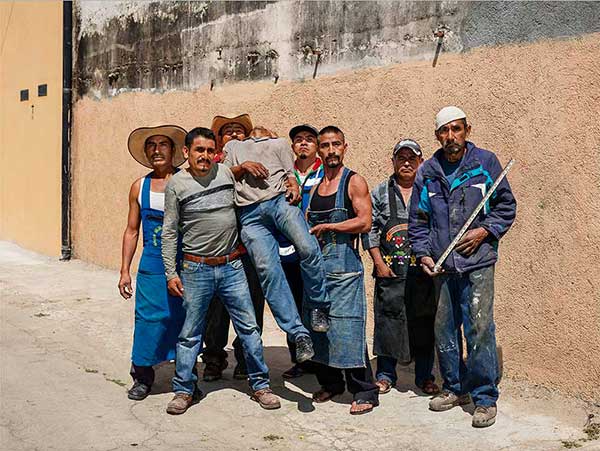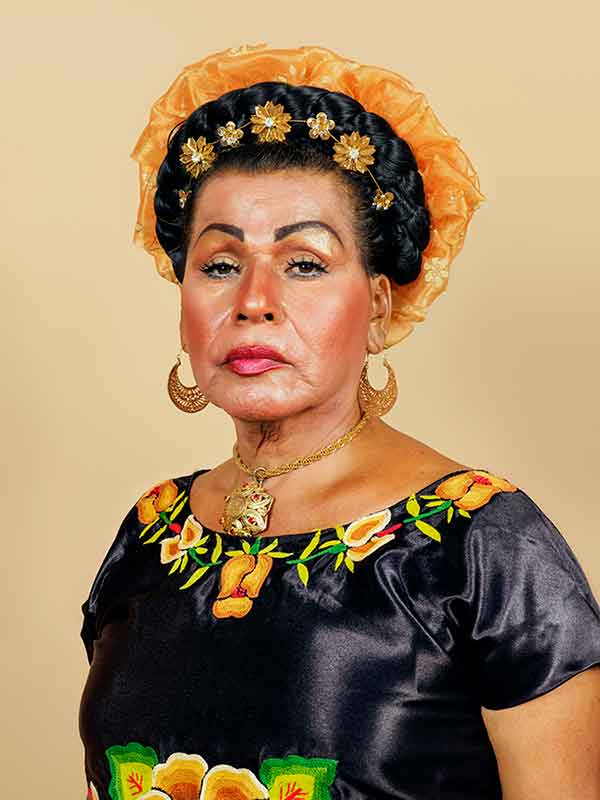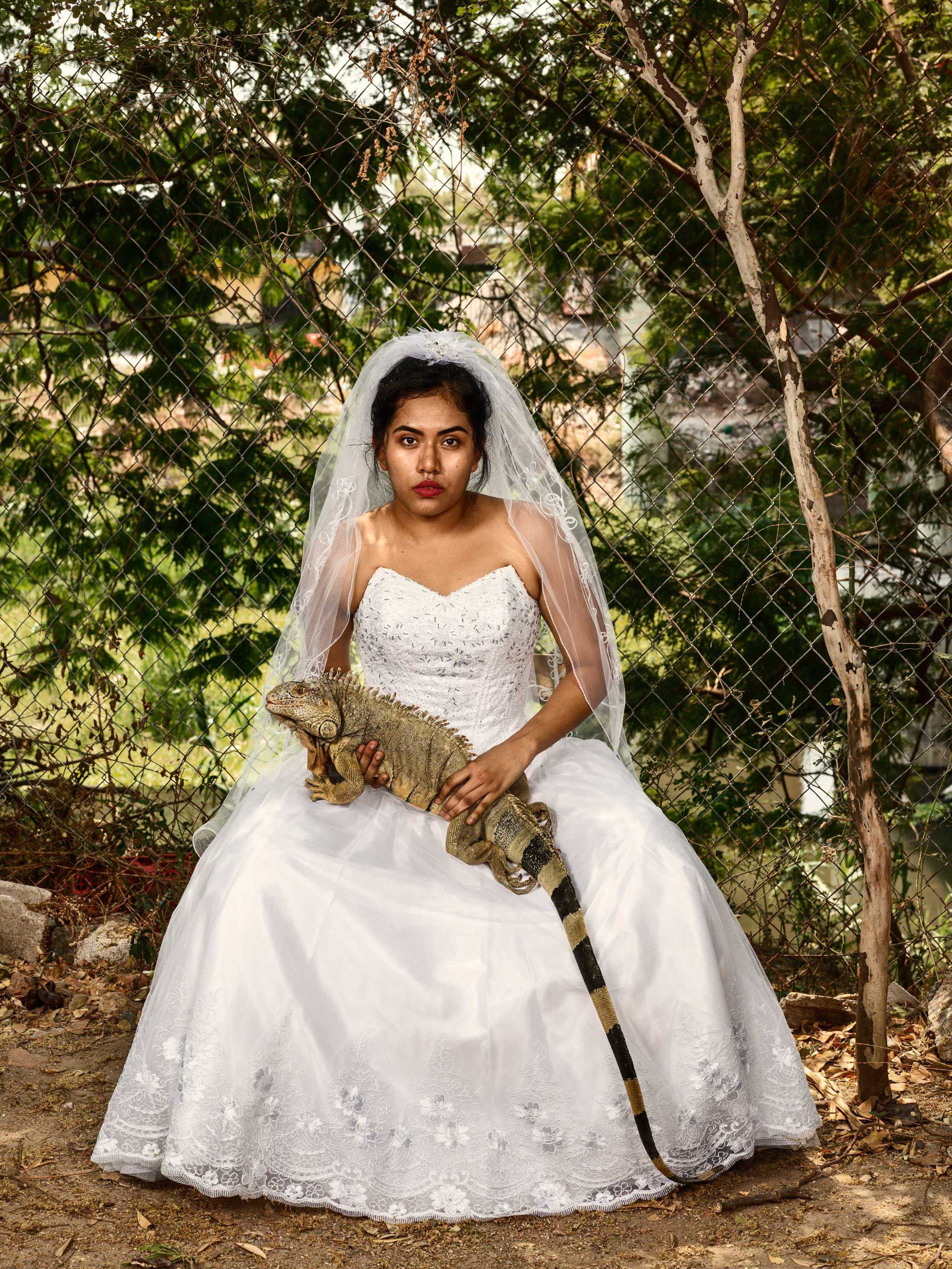
After Siqueiros, Oaxaca de Juárez, 2018
A multifaceted study of place, Pieter Hugo’s photographic series La Cucaracha. includes a mix of individual portraits, vibrant and visceral landscapes, interior studies and still lifes. Threading together varied genres, Hugo explores death, sexuality and spirituality in Mexico.
The body of work is the result of four trips to Mexico made by Hugo over a period of two years. The artist travelled to the industrialised zone of Mexico City, the desert of Hermosillo and the mountainous regions of Ixtepec and San Crisobel. searching for a more nuanced and complex understanding of the country. Of the country’s relationship with death and tradition, he stated, ‘there is a very different relationship with death here to what I am used to. If one looks beyond the clichés of dancing skeletons and sugar skulls, there’s a deeply complicated connection with mortality. This necropolitical dynamic is most visible in contradictory expressions of honouring the afterlife, in the Day of the Dead celebrations and the brutal dismemberment of bodies by narco traffickers.’

Muxe Portrait #3, Junchitán de Zaragoza, 2018. Pieter Hugo
The series looks beyond drugs and death, and reflects the artist’s long-standing interest in how history and environment shape a culture as well as those living within it. Hugo looks to rituals of role-play and rites of passage, and their associated formal codes of conduct and dress, but also wider rituals of religion, theatre and community. In this series, he specifically looks to the impact on the physical body, creating powerful portraits that focus on tattoos, jewellery, of sweat on skin and scars.
Hugo’s series also draws on Mexican history, as well as cultural, art historical and literary references, such as the mural From the Dictatorship of Porfirio Diaz to the Revolution (1957-66) by Communist artist David Alfaro Siqueiros, recreated on a Mexican street by a troupe of amateur actors. Portraits, too, are thick with references and laden with symbolism. A young bride is photographed in Juchitán de Zaragoza, holding an iguana in her lap. The iguana is a symbol of patience, understanding and kindness in Mexico, but their complex mating rituals have also informed local songs and dances. While referencing Mexico’s rich visual culture, Hugo’s work attempts to investigate how ritual, tradition and community inspire the complex reconciliation between the extremes of life and death.
The title of the body of work, La Cucaracha, comes from the Spanish folk song, popular in Mexico, whose original meaning remains unknown. The upbeat song tells the story of a cockroach who struggles to walk with two back legs missing. The titular character can symbolise resilience in the face of hardship, becoming a metaphor for the extremes of Mexican life, where joy and tragedy coexist in the fabric of everyday existence
(By Thea Gregory)
